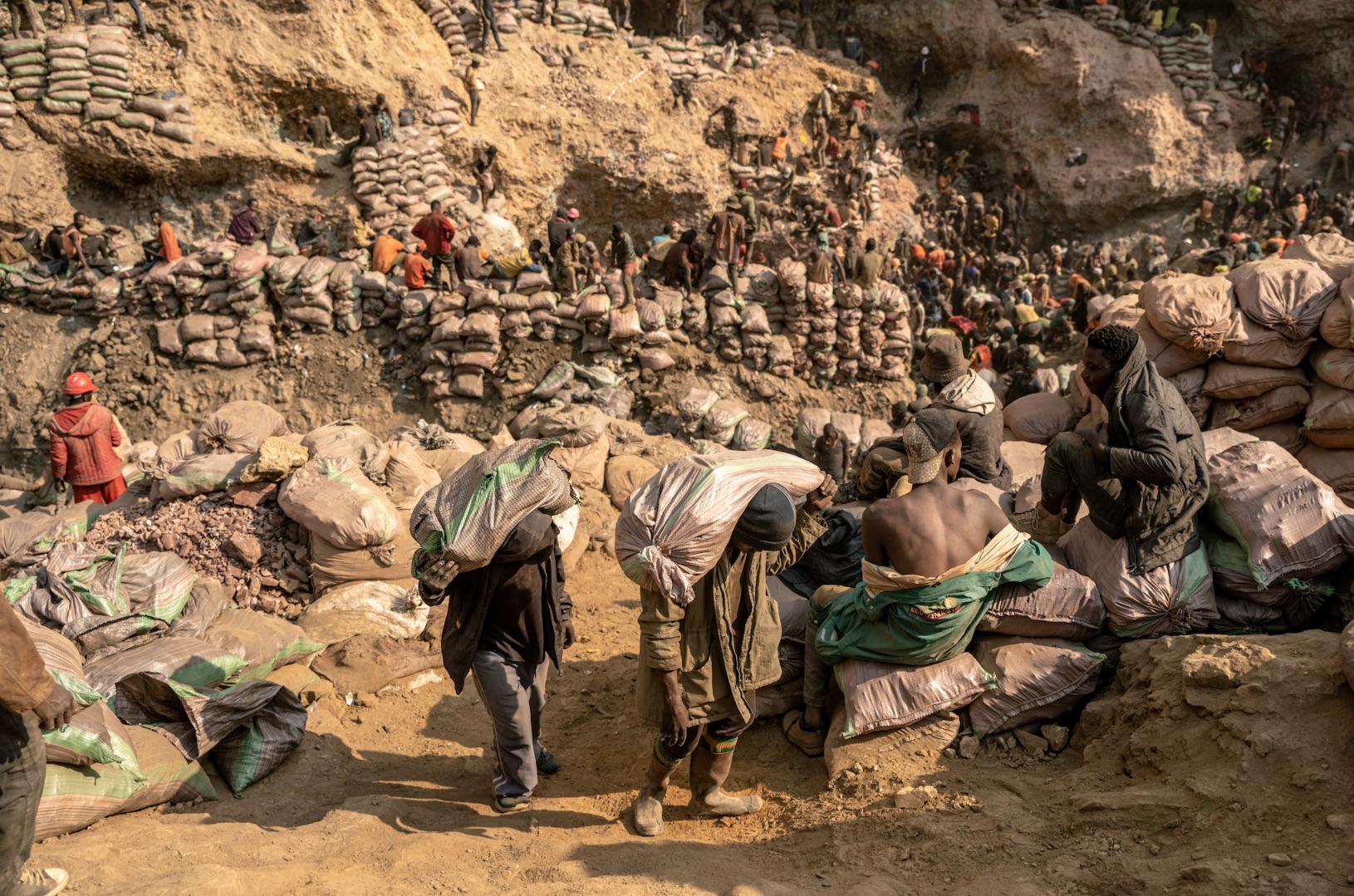“What’s Happening in Congo?”
Gallery

The Shabara artisanal mine, where cobalt and copper are dug out by hand, near the Congolese town of Kolwezi. Photo courtesy Washington Post.
The genocide in the Democratic Republic of Congo seems to be getting more attention on TikTok than traditional media.
Foreign armies, militias, and business interests are fighting for control of the Democratic Republic of Congo’s natural resources.
Itumeleng Mpofu, philosophy and economics student at University of Cape Town, South Africa, has been posting on TikTok that since March 2022, the situation in the DRC’s eastern regions has been worse, with more violence and difficulties for humanitarian workers. Several groups came together in June 2023 to confront the situation, with a special emphasis on protecting women. However, a lack of funding, hunger, illnesses, natural disasters, and rising costs have made the outcome difficult.
Hugh Kinsella Cunningham from Save the Children interviewed Mwahami, a displaced resident, who emphasized the appalling circumstances, saying, “We have no place to sleep. Food is becoming scarce. The lack of clean water, latrines, and showers is concerning. The children are getting sick.”
It is necessary to review the conflict’s historical roots, which are rooted in the Rwandan genocide, in order to comprehend the current DRC problem. Ethnic tensions between the Tutsi, Hutu, and Twa were exacerbated by Belgian colonial control in Rwanda. By using a traditional divide-and-conquer tactic, the Belgians imposed identities based on race, establishing the Tutsi’s social standing as the dominant group. Tension and instability resulted from the Tutsi being the minority and the Hutu being the majority.
Mpofu posted on TikTok that following the Tutsi’s post-colonial retreat in 1960, the majority Hutu people revolted. When the Rwandan Patriotic Front (RPF), composed primarily of exiled Tutsis, invaded in 1994, a peace agreement was reached, but it did not result in long-lasting peace. Following the 800,000 Tutsi deaths in the subsequent genocide, a large-scale Hutu refugee movement into the DRC sparked the first and second Congo Wars.
The Democratic Republic of Congo (DRC) was invaded by Rwanda, Uganda, and Burundi during the Second Congo War, sometimes referred to as the Great War of Africa. After trying to control operations in the DRC, these forces finally came into conflict with Laurent Kabila, who had previously been friends with them. The struggle lasted until 2003, when Joseph Kabila, Kabila’s son, took over as leader following his father’s assassination.
A peace deal declared the end of the conflict, while fighting persisted in the eastern areas. The complicated struggle took on new dimensions in 2012 with the establishment of rebel organizations, most notably the M23. Claims that Rwanda was backing the M23 and that the DRC was backing the Forces for Democratic Liberation of Rwanda, or FDLR, demonstrated how long-standing historical resentment persisted in igniting the conflict.
The war’s motivations have changed throughout time, with the hunt for natural resources—particularly cobalt—emerging as a primary motivator. Approximately 70 percent of the world’s cobalt, an essential component of many modern devices, is produced in the DRC.
The DRC has been accused of being destabilized by international entities such as the United States, Britain, France, and Israel, who have financed rebel groups to enable cheap cobalt production. As a result, rebel groups have turned the Congolese people into forced workers within their own nation, using them to mine cobalt by hand to sell it illegally on the black market.
According to Roy Maconachie, professor of natural resources and development at the University of Bath, writing for The Conversation, roughly 11,000 men and women are said to be employed at the site; most of them do not have access to alternative sources of income. They risk their lives by tunneling deep into the red earth and extracting cobalt from shafts as deep as 100 meters, but they hardly get a cut of the profits. Rather, they are subjected to dangerous working conditions, violations of their human rights, and low wages.
Cunningham interviewed Pitchou, a forty-year-old father of four who had dropped out of university to ride his bicycle and carry bags of cobalt from the mining pit to the washing facility, echoed the same concerns. Pitchou said, “My bike is important because it is what feeds us, me, my wife, and my children. But the wish I have for my children when they grow up is that they must go to school. Because the education they are going to get will help them in the future. My children should never go to the mine, they should focus on school because school is the future.”
The DRC’s population continues to live in extreme poverty, and they urgently need aid from other countries. The Democratic Republic of the Congo (DRC) is one of the resource-richest countries in the world, yet its people live in extreme poverty and face serious humanitarian issues, including conflict, sickness, and displacement.
Francine, a mother of three living in a displacement camp, told Cunningham, “The message I want to send is to ask people of goodwill to help us because we don’t have latrines, we don’t have food, but also the water is insufficient. We ask all the people and organizations to help us because we are suffering.”
A complicated web that continues to entangle millions of lives has been produced by the ongoing genocide, which is closely tied to past conflicts and is being fed by outside interests. The world’s silence serves as an unsettling reminder of the necessity of coordinated actions to lessen suffering and deal with the underlying causes of the DRC crisis. The cries for assistance coming from people like Francine and Pitchou reflect the pressing need for action and solidarity in the face of this ongoing genocide.
